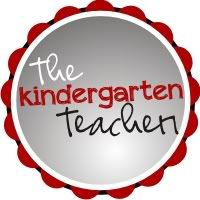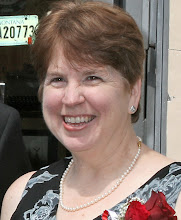Here is a link to the Common Core expectations in Reading for Maryland.
The Common Core breaks Reading into several areas: Reading Fictional Text, Reading Informational Text, Reading Foundational Skills, Writing, Speaking and Listening, and Language. It is overwhelming to look at! I will be spending more time this summer trying to read it all and translate it for my own classroom.
Personally, I know the way I am teaching reading is a mix of my experiences, the reading I have done, and the other teachers I have worked with. I know Kindergarten expectations went up tremendously when we moved to full day six years ago. We do still include the whole group reading experiences with big books, interactive writing and reading, games, and acting out stories but we also have reading groups every day.
 |
| Read to Someone |
The other Kindergarten teachers at my school also use Daily Five but all of us tweak it a bit to fit our own styles. I allow the kids to choose their centers, one of the teacher assigns the centers. I only use the five activities listed in the book, some of the teachers include a reading response center (an art project that connects to the read aloud usually). I think you can change the structure to fit what you want to teach.
 |
| Writing from an end of the year Kindergartener (written independently during Work on Writing) |
I meet with small groups even before the kids are independent at all of the centers but I know I may need to go help out. It all settles down and works like a dream, eventually!
Here are my reflections on Chapter 3:
1. Establish a gathering place for brain and body breaks.
I have a cute froggy rug. I call it the rug or the carpet (fun, right?). Sometimes we sit around the rug so we can all see each other as we share and sometimes we sit on the rug to hear a story. Some kids get assigned a letter but not all of them. I prefer they learn to manage their own behavior but some kids need more structure.
2. Developing the concept of "good fit" books (There are LOTS of examples of different good fit lessons in blogland AND Pinterest)
I used to do this in first and second grade but I feel that in Kindergarten, I need to convince them that they are READERS! I let them choose any book and teach them the three ways to read. I also give them their books from reading group for their book boxes so they always have just right books, too. This was a change I made a few years ago and I really like it. They can read to each other with much more confidence from books they already have read with me. They get lots of practice for fluency and expression, way more than just reading with me would give them. And they love it.
3. Create anchor charts with students How will these be visual in the room? Where will you store them? What about small spaces?
I do create the anchor charts with them each year. I laminated five or six 12 x 18 white papers with a different color of frog on each one. We made the I charts and I post them on a bulletin board at the front of the classroom. We refer to them many times. Each year, I seem to make a different number of charts, though. Some years we make it through all of them and some years we don't. By the time you have made two or three, it all blurs together. I truthfully can't review all of them very many times, either. So the first ones have to serve for all of them, I guess. Mine did stay up all year.
4. Short, repeated intervals of independent practice and setting up book boxes (How are you going to keep track of stamina? What will you use for book boxes? What are you going to put in those book boxes on the 1st day of school?)
Yes, I love our book boxes. I use plastic baskets that I bought in the dorm set up section of Target a few years ago. I think they are Stearlite? I have them in several different colors. They are very sturdy and have all held up well. I have attached nametags (laminated) with velcro and I write their full names on there with a sharpie. They can detach the nametag to help them learn to write their last name the second half of the year. Before school begins, I put a few books in each basket. I choose song books, board book, extra copies of books we read the first week, abc books, and non fiction books. We add to each book box the first few weeks of school with little easy reader books from scholastic or Rigby. I don't visually keep track of stamina. I just gradually keep increasing it and let them know they are reading longer.
5. Calm Signals and check in procedures (Do you already have a signal? How will you handle check ins?)
I use music for all transitions in my room. My kids know to clean up and come to the carpet when a song starts. It gives them time to finish up, clean up their area, and be ready to share. I think the sharing is one of the most important parts of our Daily Five time. I use it to instruct and monitor their progress. They know they will be showing what they got done so it motivates them.
I let my kids choose and I check them off on a class list. My special friend gets to choose first so I start in a different place each day.
I am linking up to the Daily Five Linky Party at Live Love Laugh Kindergarten.





5 comments:
I love your blog and I am your newest follower! I tried going to your lesson plans but when I get to your teacher site, it says it is not there anymore.. You gave me lots to think about!
Heather
Kickin' it in Kinder
Thank you for saying you need to "convince" them that they are readers. That's so powerful. We talk alot about becoming readers and writers and what that means and how we do it. I want to convince them that they can and will be readers!
I'm your newest follower! I hope you'll check out my "manly" blog!
Greg
Smedley's Smorgasboard of Kindergarten
Just found your blog!! great info:) I'm a new follower!
I wanted to invite you over to my site! I've got some great resources that I just posted and I know you would love to have them for your little ones....there's going to be a giveaway EVERY Day for the next 5 days!! WooHoo!!
Tammy
1...2...3...Teach With Me
I'm loving your input!!
Question--
What do you do with the kids that come in knowing nothing?? (name, alphabet etc.)
Are the letters/sounds taught in sm group?
Thanks
Heather
Oh -- my email is fryteachn5s@yahoo.com
Post a Comment